Hello Everybody! Parrots are fascinating and intelligent birds that captivate the hearts of bird enthusiasts worldwide. With their vibrant feathers, playful personalities, and remarkable mimicry abilities, they make fantastic companions for those willing to provide them with love and care. In this comprehensive guide, we will delve into the world of parrots, exploring their different species, characteristics, sizes, and much more.
Parrot Species and Their Characteristics
Parrots come in various sizes, each with its unique set of characteristics. Let’s explore the three main categories:
1. Small Parrots
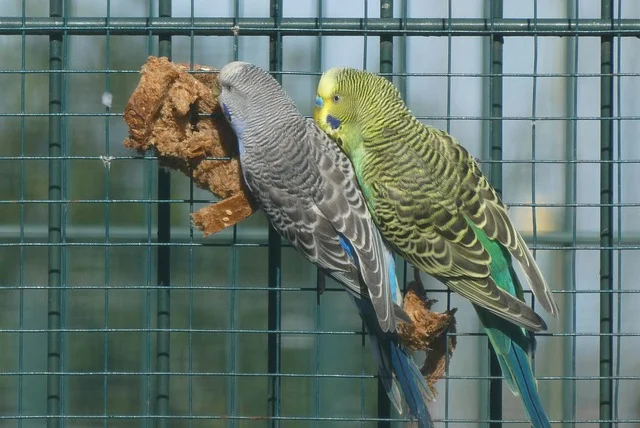
Small parrots, such as budgies, lovebirds, and parrotlets, are delightful companions known for their vibrant personalities despite their compact size. They are intelligent, social, and can learn to mimic sounds and words with proper training.
2. Medium-Sized Parrots
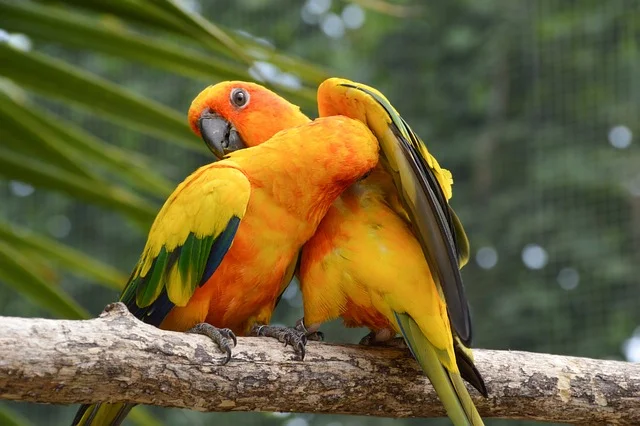
Medium-sized parrots, including conures, cockatiels, and Pionus parrots, strike a perfect balance between small and large parrots. They possess playful and affectionate personalities, making them wonderful additions to any family. Their ability to communicate through whistles and chirps adds to their charm.
3. Large Parrots
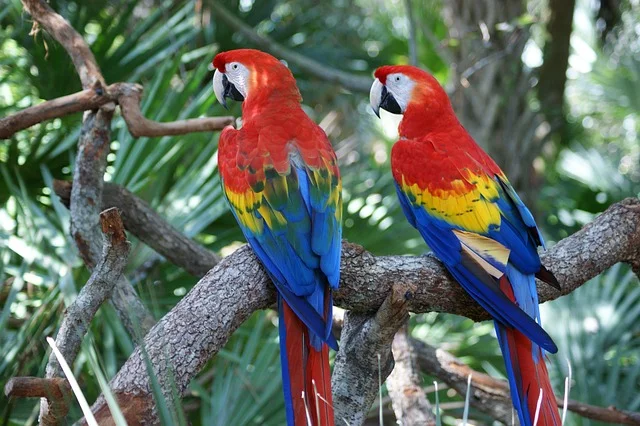
Large parrots, such as African greys, Amazons, macaws, and cockatoos, make a grand impression with their size and colorful plumage. These intelligent birds excel in mimicry and can form deep bonds with their human caregivers. Their striking personalities and vocal abilities make them popular choices for experienced parrot enthusiasts.
Parrot Characteristics Comparison Chart
Here is a comparison chart outlining the key characteristics of different parrot species:
| Parrot Species | Size | Lifespan | Talking Ability | Feather Colors |
|---|---|---|---|---|
| African Grey | Medium | 40-60 years | Excellent | Grey |
| Amazon | Medium | 25-50 years | Good | Various |
| Cockatiel | Small | 15-20 years | Fair | Grey, white, yellow |
| Cockatoo | Large | 40-60 years | Good | White, black, pink, grey |
| Conure | Small/Medium | 20-30 years | Fair | Various |
| Eclectus | Medium | 30-50 years | Fair | Bright green, red, blue |
| Lovebird | Small | 10-15 years | Poor | Green, yellow, blue |
| Macaw | Large | 50-80 years | Excellent | Red, blue, green, yellow |
| Senegal | Small/Medium | 20-30 years | Fair | Grey, green |
Please note that these characteristics can vary between individual birds within each species, and these are just general guidelines. Additionally, talking ability can depend on the individual bird’s training and environment.
Parrot Noise Level Chart
Parrot Noise Level Chart, ranking different parrot species based on their typical noise levels:
| Parrot Species | Noise Level |
|---|---|
| Budgies | Low |
| Cockatiels | Low to Medium |
| Lovebirds | Low to Medium |
| Pionus Parrots | Low to Medium |
| African Greys | Medium |
| Amazons | Medium to High |
| Conures | Medium to High |
| Macaws | High |
| Cockatoos | High |
Individual birds can have different noise levels, which can be affected by factors like age, surroundings, and social interactions. It’s important to provide appropriate mental stimulation, social interaction, and training to manage and minimize excessive noise in parrots.
Alexandrine Parrot: Size, Behavior, and Care
The Alexandrine parrot, a medium to large-sized parrot species, deserves special attention. With an average length of 22-25 inches (55-63 cm), they are slightly larger than cockatiels but smaller than most macaws. Known for their vibrant green feathers and reddish beaks, Alexandrine parrots possess a friendly and intelligent nature. They require a spacious cage, a balanced diet, regular mental stimulation, and social interaction to thrive in a home environment.
Parrot Weight: How Much Do Parrots Weigh?
Parrot weight varies among species, providing insight into their overall health and well-being. Here are approximate weight ranges for some popular parrot species:
- Budgies: 1-1.4 ounces (30-40 grams)
- Cockatiels: 2.6-4.2 ounces (75-120 grams)
- African Greys: 14-18 ounces (400-510 grams)
- Amazon Parrots: 13-20 ounces (370-570 grams)
- Macaws: 1-4 pounds (450 grams to 1.8 kilograms) or more, depending on the species
Monitoring your parrot’s weight and ensuring a balanced diet are essential for their overall health and longevity.
Popular Parrots: Meet the Beloved Feathered Companions
Several parrot species have captured the hearts of bird enthusiasts worldwide. Here are some of the most popular parrot species:

- Budgies (Parakeets): Budgies are small, colorful, and highly sociable birds that make fantastic companions for both individuals and families.
- Cockatiels: Known for their striking crests and friendly personalities, cockatiels are one of the most popular pet parrots. They are playful, affectionate, and great entertainers.
- African Greys: African greys are renowned for their exceptional intelligence and remarkable ability to mimic human speech. They thrive on mental stimulation and require dedicated care.
- Amazon Parrots: With their vibrant plumage and outgoing personalities, Amazon parrots are charismatic pets. They enjoy interacting with their human companions and can be excellent talkers.
- Macaws: Macaws are known for their brilliant colors, large size, and playful nature. They demand ample space, mental stimulation, and socialization to thrive.
- Cockatoos: Cockatoos are highly intelligent and affectionate birds. They form strong bonds with their caregivers, but they require considerable attention and mental stimulation.
Harmonizing Your Parrot Community: Aviary Bird Compatibility
Creating an aviary that fosters harmony among parrots requires careful consideration. Here are some guidelines to ensure compatibility among your feathered friends:
- Birds of the same species generally get along well and can be housed together in an aviary.
- Birds of similar size and temperament are more likely to coexist peacefully.
- Avoid mixing aggressive species with more docile ones to prevent potential conflicts.
- Provide enough space, perches, toys, and feeding stations to minimize competition and ensure mental stimulation.
Consulting with experienced aviculturists or avian veterinarians is vital to ensuring a successful and happy parrot community in your aviary.
The Best Talking Bird

The African Grey Parrot is widely regarded as the best talking bird. African Greys are renowned for their exceptional intelligence and remarkable ability to mimic human speech with incredible accuracy. They possess an impressive capacity to learn and understand words, phrases, and even entire conversations. Their ability to mimic voices, tones, and inflections is often uncanny.
African Grey Parrots have earned a reputation as one of the most skilled and talented talking parrot species. However, it’s important to note that individual talking abilities can vary among birds, and consistent training and social interaction are crucial for maximizing their potential.
Best Talking Parrots for Beginners
When it comes to talking parrots for beginners, there are a few species known for their talking abilities and beginner-friendly nature. Here are some of the best-talking parrots for beginners:

- Budgies (Parakeets): Budgies are small parrots that are often excellent talkers. They have clear voices and can learn a wide vocabulary with consistent training and interaction.
- Cockatiels: Cockatiels are popular companion birds known for their whistling abilities. While their talking skills may not be as advanced as those of some other parrot species, they can learn to mimic words and phrases with time and training.
- Indian Ringneck Parrots: Indian Ringneck Parrots are intelligent birds with the potential to develop impressive talking skills. They can mimic various sounds and have the ability to speak in a clear and articulate manner.
- Quaker Parrots: Quaker Parrots, also known as Monk Parakeets, are social and intelligent parrots that have the capacity to become great talkers. They are known for their clear speech and ability to mimic human voices and sounds.
Each parrot is an individual, and talking ability can vary among birds. Consistent training, patience, and socialization are key to helping any parrot, regardless of species, develop its talking skills.
What is the noise level of Blue Streaked lorikeets?

Blue Streaked lorikeets are colorful and lively parrots that belong to the lory family. They have bright red feathers with blue streaks on their neck and back, and an orange beak. Blue Streaked lorikeets are very social and vocal birds. They communicate with each other using a variety of sounds. The noise level of these birds depends on their mood, environment, and time of day. They tend to be louder in the morning and evening when they are most active and playful.
The noise level of blue-streaked lorikeets can range from 50 to 80 decibels. So, the noise level of Blue Streaked lorikeets can be described as loud.
What is the noise level of Red-lored parrots?

Red-lored parrots are medium-sized parrots that belong to the Amazon family. They have green feathers with red patches on their forehead, cheeks, and shoulders, and a yellow beak. These birds are native to Central and South America, where they live in forests, woodlands, and savannas.
The noise level of these birds depends on their mood, environment, and time of day. They tend to be louder in the morning and evening, when they are most active and vocal. The noise level of Red-lored parrots can range from 70 to 90 decibels, which is comparable to a vacuum cleaner or a hair dryer. They may not be suitable for people who live in apartments or have sensitive neighbors.
Frequently Asked Questions (FAQs) About Parrots
Can parrots really talk?
Yes, many parrot species have the ability to mimic sounds, words, and even phrases. African greys, Amazons, and some cockatoos are known for their exceptional talking abilities.
How long do parrots live?
Parrots have long lifespans compared to many other pets. Depending on the species, they can live anywhere from 15 to 80 years or even more with proper care.
What should I feed my parrot?
A balanced diet for parrots typically consists of high-quality pellets, fresh fruits, vegetables, and occasional nuts or seeds. Consult with an avian veterinarian for specific dietary recommendations for your parrot species.
Are parrots noisy?
Parrots can be noisy, especially during their active periods or when they want attention. However, with proper training, socialization, and mental stimulation, you can help manage their vocalizations.
What is the noise level of Lineolated parakeets?
Lineolated parakeets are very quiet and calm birds. Lineolated parakeets have low noise levels. They don’t screech like some other parrots, but they make soft and pleasant sounds. They can also mimic human speech and melodies in their cheerful chirp. They are great for apartments and people who prefer a low-maintenance pet.
What is the noise level of Sun conures?
Sun conures are very loud and vocal birds. If you want to keep a sun conure as a pet, you should be prepared for their noise level and vocal abilities. They may not be suitable for apartments or people who have sensitive neighbors.
Conclusion
This guide has given you an overview of the amazing diversity and intelligence of parrots. You have learned about their different sizes, features, and personalities, as well as how to choose the best species for your aviary. Parrots are wonderful pets for those who love their colorful, charming, and fun-loving nature. To keep your parrot healthy and happy, make sure to give them proper care, attention, and a cozy environment.
We hope this guide has provided you with valuable insights into the enchanting world of parrots. Hope you like this article!




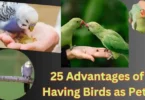
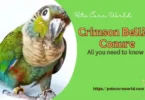
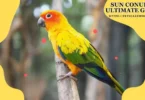
Leave a Comment
You must be logged in to post a comment.